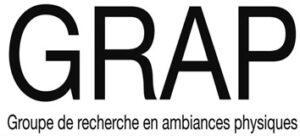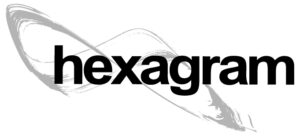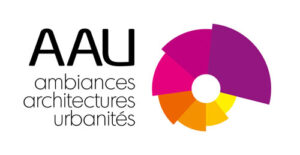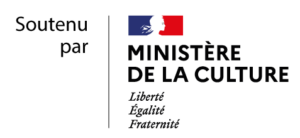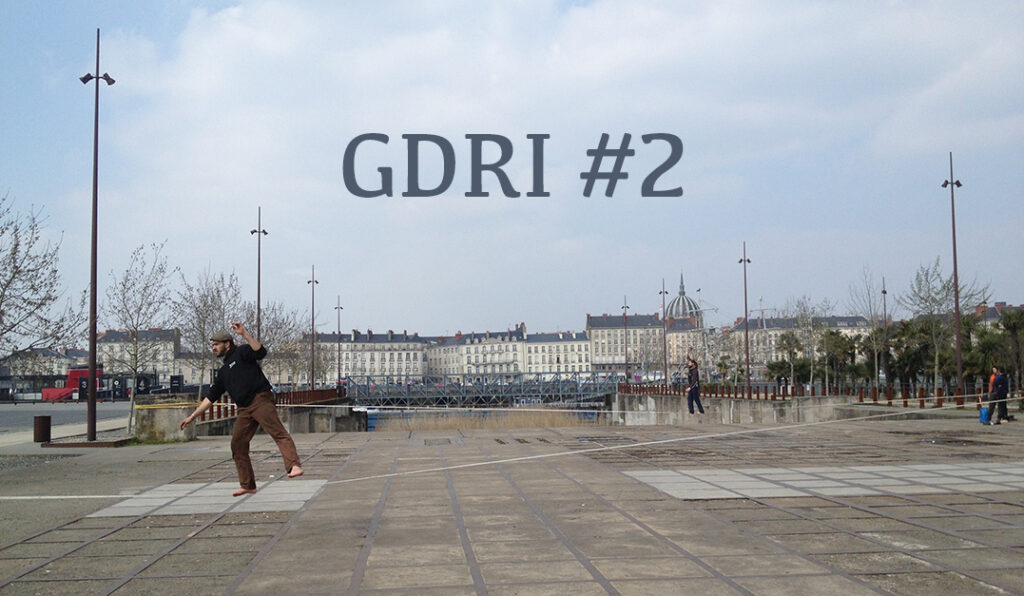
Location
Montreal, Canada
Translating Ambiances – 2014/2017
This CNRS International Research Group (GDRI) was initiated by the International Ambiances Network to explore the issue of ambiances in translation. The word ‘translation’ should be taken in the broad sense of the term, and not reduced to a strictly language-based meaning, though this aspect is obviously present in the project, indeed a key component. By putting the accent on translation, our purpose is to acknowledge the plurality of versions of and means of access to ambiances, to bring into play the notion of ambiance by situating it in a collaborative process; and to address the topic of architectural and urban ambiances by looking at the disparities and shifts this topic involves.
Furthermore, by investigating ambiances in terms of translation, we draw together several strands:
- We stand at the meeting point of science, enterprise and art. The translations carried out as part of the project will draw on learning, methods and resources from these three worlds.
- Overall we propose to adopt a pragmatic posture. We intend to use experimentation in our work on ambiance, focusing on the effects produced, the consequences and movements of this notion.
- The translation problématique serves as both a point of entry to the topic of ambiances and as a collaborative working principle for our inquiry. With regard to methodology our approach will involve ‘putting ourselves in translation’.
The idea of using ‘translation’ as a point of entry may be developed in four ways:
Translation in terms of language: clarifying the concept of ambiance
The first form of translation consists in looking for words in other languages equivalent to the French term ‘ambiance’. Obviously there is no exact equivalent for the word in English, Italian, Danish or Portuguese. So any translation work must focus on the differences between cultures and bring into play the ‘linguistic hospitality’ advocated by Paul Ricoeur. Putting the foreign language to the test in this way therefore means giving up the pretence of a perfect, literal translation, and adopting in its place a series of reformulations. In looking for equivalents and wondering which is the best possible version, a new semantic field opens on each occasion, revealing new ways of dividing up reality, while requiring us to clarify as much as possible our understanding of the term ambiance, which in turn reveals the potential and limits of the French word. In short language translation turns into a heuristic means of deconstructing the concept, of highlighting its implicit content, but also uncovering as yet unexplored resources and broadening the scope of its meaning. In short, our purpose here is to achieve greater clarity.
Translation in terms of discipline: exploring scientific bridges
The second form of translation involves creating the conditions for exchange and contribution between separate disciplines, which nevertheless have a stake in the matter of ambiance. We may legitimately ask how models of understanding, methods and styles of writing as different as those associated with sensory anthropology, computer modelling, architecture, urban studies, applied physics or indeed fine art, can try to agree and meet, perhaps even cross-breed and engage in fruitful dialogue on the sensory world. Here the interdisciplinary concept of a sound effect, as developed by Cresson, may certainly serve as a guideline or benchmark for establishing the conditions for such dialogue. However, our purpose is not so much to attempt, collectively, to build a single, definitive interdisciplinary tool as to explore more modestly various bridges, areas of agreement and transverse commonalities between the various approaches involved.
Translation in terms of the senses: experimenting multimodal forms of expression
Our third form of translation consists in building experimental bridges between senses. One of the blind spots of the ambiances concept hinges on the question of plurisensoriality, or better still of in situ intersensoriality. A great deal of work has been done focusing on one specific sensory modality: light, sound, smell or heat. So there is every reason to ask how the relation between various sensory modalities works, both in terms of inhabiting experience and of design, how one modality can link up or resonate with another. The audio-visual link is of course the one that first comes to mind (with resources derived from cinema in particular) and it will obviously be used. But we would rather not restrict ourselves to just the relation between images and sounds. We shall consider other sensory modalities, such as odour or heat, which are equally important to ambiance and test the resources at our disposal to express or represent them. In this respect the art world should play an important part.
Translation in professional terms: in quest of modus operandi
The fourth form of translation aims to investigate the scope for exchange and circulation between the world of research and that of architecture and planning. How do the various players tasked with designing and developing private and public space grasp the field of ambiance. What tools, transfers and processes are brought into play to make the ambiance concept operational in a professional framework?
The aim here is to look at how the field of ambiances is transformed and hybridized as soon as it comes into contact with design practice and development constraints. We shall draw on the experience of each team to put into perspective the various contexts, applications and uses of the ambiance concept. This form of translation will deliberately focus on a forward-looking approach, in search of new modus operandi for design.
The four levels of translation are central to the project. By placing ourselves between languages, disciplines, senses and activities we can set up a process of investigation (in the strongest sense of the term) capable of taking account of the complexity of the field of ambiances, and of the scientific and cultural diversity of the teams involved.
By focusing on operations designed to clarify, explore, experiment and look to the future, we can assess the possibility of a pragmatist attitude to ambiances. In this respect our purpose is not so much to take stock of existing learning or to stop at a single model for making sense of ambiance, but rather to put to the test a field of research and action that is in the process of taking shape.
Scientific Officers:
- Jean-Paul Thibaud, AAU-CRESSON, Graduate School of Architecture of Grenoble | International Ambiances Network
- Daniel Siret, AAU-CRENAU, Graduate School of Architecture of Nantes | International Ambiances Network
Support:
Interdisciplinary reading, measurement and notation of ambiances
The second GDRI seminar, held in Montreal, will explore the theme of Disciplinary Translation from the perspective of Interdisciplinary reading, measurement and notation of ambiances. How can ambiances be represented and evoked through different systems and mediums? How can such varied forms of representation and evocation bring disciplinary approaches together? Questions of movement among disciplines and the possibility of interdisciplinary translation are promising avenues for creating bridges between art, architecture, and science. For example, although the link between auditory and visual elements is firmly established in the digital arts, videography, and film, it need not be limited to these fields. Other sensory modes just as critical for ambiances, like smell and heat, for example, warrant consideration as ways to enact this transdisciplinary rapprochement and test the limits of the means of expression and representation currently available to us.
Reading, measurement, and notation will be used to establish a transdisciplinary discourse on ambiances. Here, reading is understood as a way to apprehend or interpret ambiances by highlighting the issue of language in different forms. The goal of measurement is to provide tools to identify the scale, dimension, volume, distance, and tension informed by ambiances. The concept of notation addresses the issue of symbolic systems and the inscription of signs leading to the reproduction or transmission of an idea or experience. These forms of reading, measurement, and notation are clearly influenced by the languages, procedures, and means of expression associated with our various disciplines of expertise.
The seminar is an opportunity to experiment with the issue of ambiances in two types of space: the interior space of the concourse and the exterior, open, urban space. Workshops, sound and visual art experimentation, and more formal presentations will fill these three days.
We look forward to welcoming you, sharing ideas with you, and translating your ambiances.
Mario Côté
Artist and Professor
Université du Québec à Montréal
cote.mario@uqam.ca
Claude Demers
Architect and Professor
Université Laval de Québec
claude.demers@arc.ulaval.ca
Monday April 27, 2015
Seminar of the GDRI Translating Ambiances
| 8h30 | Welcome |
| 9h | Official Opening and speeches |
| 9h15 | Seminar presentation |
| 9h45 | Communications and discussions |
| 10h30 | Coffee break |
| 10h45 | Presentation of experiments Presentation of artistic, methodological and exploratory contributions |
| 12h30 | Experiments settings and organization |
| 12h45 | Collective lunch |
| 13h30 | Work and experiments per group |
| 14h30 | Recordings: Esplanade Place-des-Arts (all groups) |
| 17h | Break |
| 18h | Experience: Yan Breuleux piece of art |
| 19h | Cocktail |
Tuesday April 28, 2015
Seminar of the GDRI Translating Ambiances (following)
| 9h | In each group: finalising field work and interdisciplinary discussions, organization of the data collected, preparing the return |
| 12h | Collective lunch |
| 13h | All groups: collection and organization of all field data and returns |
| 15h | Coffee break |
| 15h30 | Plenary: return and discussion in group, assessment of the work completed in group |
| 19h | Lunch (not provided) |
Wednesday April 29, 2015
Seminar of the GDRI Translating Ambiances (following)
| 9h00 | Multidisciplinary synthesis and discussion |
| 10h30 | Coffee break |
| 11h | Discussion :
|
| 13h | End of the 2nd GDRI seminar |
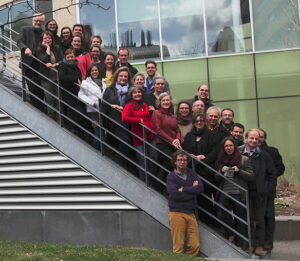
Quebec
- Yan Breuleux (Montréal, Canada)
- Christian Bujold (Montréal, Canada)
- Sophie Castonguay (Montréal, Canada)
- Julie Châteauvert (Montréal, Canada)
- Mario Côté (Montréal, Canada)
- Claude Demers (Québec, Canada)
- Omar Faleh (Montréal, Canada)
- Paul Landon (Montréal, Canada)
- André Potvin (Québec, Canada)
- Gisèle Trudel (Montréal, Canada)
- Sherry Simon (Montréal, Canada)
- Myriam Suchet (Centre d’Études Québécoises)
- Jean-Sébastien Vague (Montréal, Canada)
- Samuel Tronçon (Montréal, Canada)
France
- Pascal Amphoux (Grenoble, France)
- Aurore Bonnet (Nantes, France)
- Laure Brayer (Grenoble, France)
- Rainer Kazig (Grenoble, France)
- Thomas Leduc (Nantes, France)
- Anne Petit (Nantes, France)
- Daniel Siret (Nantes, France)
- Jean-Paul Thibaud (Grenoble, France)
Europe
- Niels Albersten (Aarhus, Denmark)
- Imme Bode (Hamburg, Allemagne)
- Evangelia Paxinou (Volos, Greece)
- Barbara Piga (Milan, Italy)
- Nicolas Rémy (Volos, Greece)
Brazil
- Paola Berenstein Jacques (Bahia)
- Cristiane Duarte (Rio de Janeiro, Brazil)
- Fabiana Dultra Britto (Bahia, Brazil)
- Ethel Pinheiro (Rio de Janeiro, Brazil)
Algeria
- Nadia Sahraoui (Constantine, Algérie)
Contributions au séminaire du GDRI
Propositions théoriques
- Niels Albertsen
Title : A(n)tmospheric gesturesAbstract : A comparison of philosophy (phenomenology) and sociology (actor-network theory) on atmospheres and their gestural re-presentation.
- Carolina Rodríguez
Titre : La traduction (inter)disciplinaire de la notion d’ambiance.
Expérience artistique
- Yan Breuleux
Titre : La transposition de l’expérienceRésumé : PURFORM est un duoAV formé de l’artiste visuel Yan Breuleux et du compositeur Alain Thibault. Productions audio-visuelles immersives et impact physique et psychologique sur le spectateur. Le projet White Box où le public peut interagir en utilisant des téléphones portables. Créer une expérience immersive en utilisant les techniques de l’illusion issues de l’art optique.
Propositions pour le workshop
- Imme Bode
Titre : L’ambiance corporelle – Traduction en/sans motsRésumé : Sentir les espaces à partir de son corps pour « être dedans » et développer la perspective de l’environnement à partir de ce point de vue.
- Aurore Bonnet
Titre : Vidéographie de l’ambiance par les corpsRésumé : De la marche comme posture de recherche à l’exercice des corps en danse, il s’agirait, à la manière du projet « Cartographies » de la compagnie Philippe Saire, de tenter la réalisation d’un court film traduisant l’expérience et l’expression de l’ambiance d’un lieu
- Laure Brayer
Titre : Dispositifs filmiques et Paysage urbain : deux lectures possiblesRésumé : Comment traduire la transformation ordinaire des lieux à travers le film ? A partir de deux postures filmiques idéal-typiques il s’agira de tester sur le terrain deux lectures complémentaires des ambiances urbaines.
- Chistian Bujold
Titre : Réception et transformation: l’ambiance à travers le corps en performanceRésumé : La performance en modes passifs et actifs comme outils de flexion de l’ambiance. Dévoiler l’invisible et faire apparaître l’ambiance selon deux modalités: 1) le passif entendu comme intrusion de l’ambiance dans le corps en lien avec les sens du toucher, de la vue et de l’ouïe ; 2) l’actif : dans laquelle il sera question d’agir sur elle et d’en tester la résistance.
- Sophie Castonguay
Titre : Description d’ambiances et leurs enregistrementsRésumé : L’ensemble des descriptions sera orchestré afin d’être répété, par le biais de casque d’écoute, à voix haute sur la place publique là où les images ont été capturées. La description comme geste de création et la prosodie comme instance de sens dans la prise de parole citoyenne.
- Mario Côté
Titre : Dessins d’enregistrementRésumé : Comment capter l’écoute d’ambiances urbaines sans disposer d’appareils technologiques pour le faire? Adopter la posture du scribe ou du moine copiste et reconsidérer l’écoute des ambiances par la trace de la main. Les résultats deviennent des partitions à interpréter.
- Claude Demers
Titre : Lumières et spatialitéRésumé : le contraste et la brillance comme outils d’analyse qualitative et quantitative. La méthode est basée sur l’imagerie à grande gamme dynamique et le dessin numérique.
- Cristiane Duarte
Titre : La Cartographie des ManifestationsRésumé : Hypothèse : les ambiances peuvent engendrer l’empathie spatiale. La méthodologie « cartographie des manifestations » consiste en une cartographie des sens et des émotions ressentis dans un lieu déterminé. Cette méthodologie permet de « traduire » les ambiances, mais aussi de comprendre l’ambiance elle-même en tant que traduction d’un contexte socioculturel urbain et spécifique.
- Paul Landon
Title: Architecture space place timeAbstract : The Place des Arts/Complexe Desjardins site and Theatre Maisonneuve. Musicality in architecture and urban space. Le Corbusier’s and Xenakis’s Modulor system and John Cage’s Chance and Random composition.
- Thomas Leduc
Titre : Paysage, perméabilité des lieux et exploration visuelleRésumé : Pour la théorie de la perméabilité, la configuration des lieux, et plus précisément la présence d’occlusions susceptibles de masquer une part d’espace non prévisible dans notre environnement visuel, peuvent nous inciter à son exploration.
- Evangelia Paxinou
Titre : Ambiances et EvénementsRésumé : Révéler les ambiances du site à travers le jeu d’apparition et de disparitions d’événements sensibles lors d’un parcours dans l’espace public.
- Anne Petit
Titre : Effets chromatiques urbainsRésumé : La question des effets chromatiques produits par les bâtiments colorés sur le milieu urbain et sur notre perception. Le temps d’un parcours, quels sont les effets produits par la couleur et comment interagissent-ils sur notre perception de l’environnement urbain ?
- Barbara Piga / Rossella Salerno
Title:Abstract : Interpreting and communicating the atmosphere of places: outcomes from a teaching experience in architecture. In order to describe and communicate the perceived ambiance of the place they used different types of media according to their sensitivity and technical abilities.
- André Potvin
Titre : Le flâneur urbainRésumé : Relevé environnemental et expression de la diversité thermique. La caméra infrarouge permet de capter l’invisible, et donc d’illustrer la relation thermique existant entre l’espace et ses habitants.
- Ethel Pinheiro
Titre : Les secrets de la villeRésumé : Pendant que les corps s´éparpillent autour des places, au long des rues ou dans les immeubles en cherchant un but, un « où arriver » , le « Secret de la Ville » essaye de reconvertir ce chemin en un objet ; tente construire une poétique visuelle de la ligne tracée par la marche aléatoire.
- Nicolas Rémy
Titre : Cartographie des ambiances sonoresRésumé : Cartographier les ambiances (sonores) du site. Qualifier les ambiances du site par les sons qu’on peut entendre et produire dans la zone étudiée.
- Daniel Siret
Titre : Sous le soleil (à peu près)Résumé : Observation des attitudes au soleil dans l’espace public. Description et notation des situations de relâchement du corps et d’abandon de soi. Ouvrir la question de l’aménagement de l’espace public et de la « prise au soleil ».
- Myriam Suchet et Julie Châteauvert
Titre : Ambiance/ambianceRésumé : Nous prendrons appui sur une photographie de Sapeur (membre de la Société des Ambianceurs et Personnes élégantes) pour identifier, à la croisée de nos approches, différents marqueurs d’ambiances et procéder à une collecte de matériaux (linguistiques, publicitaires, vestimentaires, sonores, photographiques etc.) dans le but d’organiser un dispositif qui nous permettra de faire retour sur la méthodologie potentielle d’une réflexion indisciplinaire.Atelier imaginé au sein du collectif de traduction indisciplinaire formé par : Patricia Boushel, Hélène Buzelin, Julie Châteauvert, Raúl Ernesto Colón, Catherine Leclerc, Anna Sheftel, Sherry Simon et Myriam Suchet)
- Jean-Paul Thibaud
Titre : A l’écoute des tonalitésRésumé : Il s’agira d’explorer les tonalités du site en expérimentant un protocole d’écoute en aveugle. Plusieurs petites expériences seront proposées consistant à se placer à chaque fois en situation d’immersion auditive.
- Jean-Sébastien Vague (duo)
Titre : L’imitation comportementale comme outil d’interprétation des ambiancesRésumé : Éprouver diverses normes sociales dictées par les interactions humaines. Quels gestes et quelles postures l’Esplanade de la Place-des-Arts entraîne-t-elle ? Quels rythmes les corps et les membres entraînent-ils ? La notion d’imitation servira d’outil d’analyse des ambiances : observation des gestes, classement et schématisation, puis reproduction chorégraphiée de ces mouvements simplifiés, en direct.


